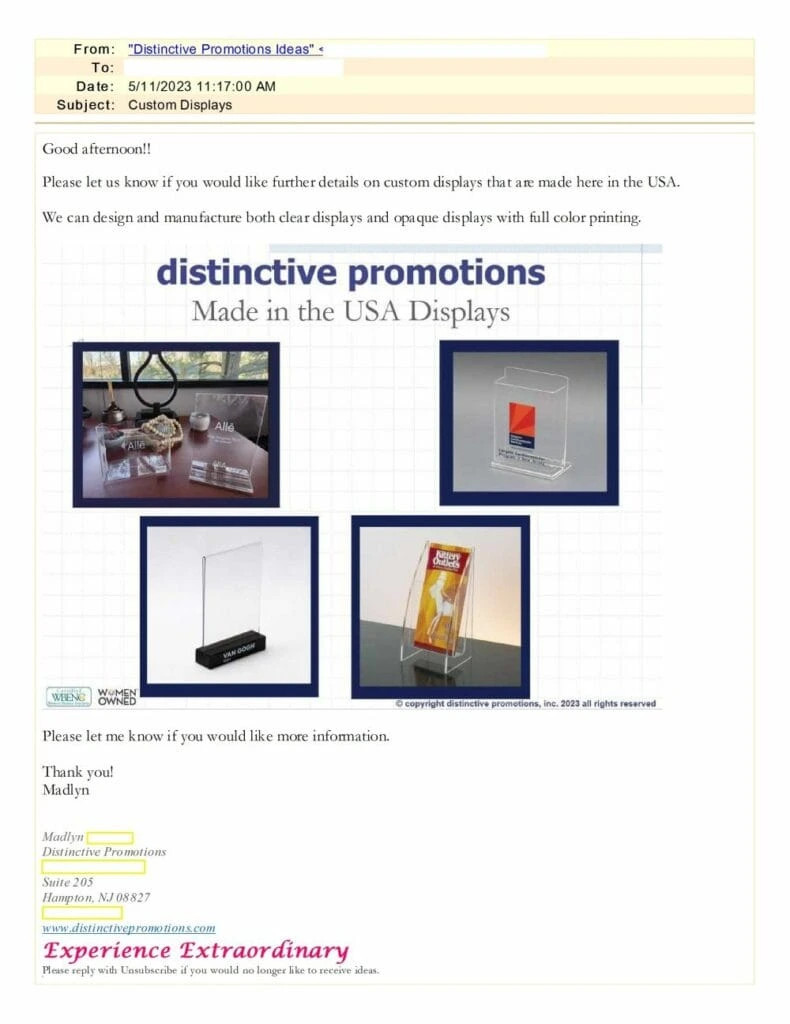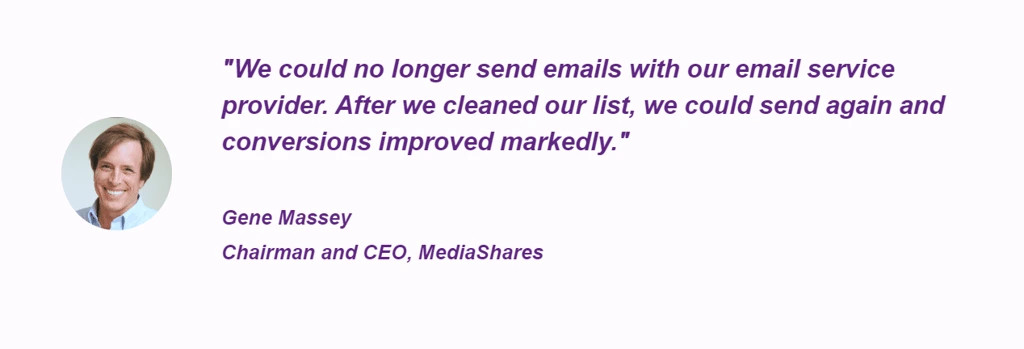Written by
06 February, 2025
Email spam is any unsolicited email sent in bulk, usually in a commercial context. An email may also be spam if the sender is unknown to the recipient. You can prevent your emails from being sent to the spam folder by ensuring subscribers are opted in, using a double opt-in process, providing a one-click unsubscribe option, personalizing your messages, and maintaining a consistent sending schedule.
Spam is as prevalent as ever, so email spam filters are getting increasingly strict. Consumers are catching up, too: mark an email as spam if it simply looks like spam. For businesses not following email marketing rules, this is a big problem. When your emails end up in spam, your audience misses out on important updates, and your hard work goes to waste.
Worse, it can hurt your reputation and make it harder to connect with customers in the future. In this article, we’ll explain what causes emails to and share simple tips to help your messages land in the inbox every time.
Merriam-Webster defines spam as “unsolicited, usually commercial messages sent to a large number of recipients or posted in a large number of places.”
Whether it’s Nigerian Princes promising you an inheritance or any number of pseudo pharmaceuticals, spam affects almost everyone. Some inbox providers do a great job of keeping junk mail at bay, whereas others let a high volume slip through the cracks.
According to Statista, over approximately one year, almost were sent every single day.
There are more spam emails than legitimate ones, but you may still wonder why we call junk mail “spam.” To find the answer to that, we must look to comedy.
The first unsolicited mass sending of email ever on May 1, 1978. That’s right – spam is almost a quarter of a century old.
Gary Thuerk, at the time the marketing manager for Digital Equipment Corporation, sent about 400 messages on Arpanet. Some call him the “father of spam,” but Thuerk prefers “the father of e-marketing.”
With spam nearing 50 years, it continues on. It’s clear that those involved with spam sending are getting something out of it, but it’s essential that there’s a clear distinction between marketing emails and spam.
Let’s find out what true spam is because lines are sometimes blurry.
Some emails are blatantly spam. No, nobody is trying to get ahold of you because they want to give you $10 million.
Other emails aren’t necessarily spam, but seem “spammy.” Whether you’re sending a personal or business email, staying far away from spam-like behavior is vital to your success.
But in order to know what to avoid, you have to know what makes an email spam.
To define spam, let’s look to the fascinating Brad Templeton, Chairman Emeritus of the Electronic Frontier Foundation, who also introduced himself as “a spam historian of sorts,” on NPR’s All Things Considered.
Templeton asserts that in order to be spam, an email must meet all of the following criteria:
It’s unsolicited
If someone isn’t asking to get your bulk emails, it’s never a good idea to add them to your list of contacts. You may be asking, but what if I think they’ll like my emails? That’s still sending someone unsolicited emails, which gets you one-third of the way down the road to being a bona fide spammer.
It’s a “mass mailing”
You don’t know whether reaching out to someone person-to-person is wanted. Therefore, an individual emailing another individual is not spam.
In some industries, cold emailing is vital. For example, a journalist requesting a comment may reach out to someone who may not want to hear from anybody but their friends and family. Remember: different people use email for different purposes.
Related: Are you looking to connect with someone and need their email address?
Adding someone to a mass mailing can be a violation of the law – in many countries anyways. By definition, all spammers send mass mailings. For the most part, their mass mailings are indiscriminate.
The sender is a stranger to the recipient(s)
Chances are, you’ll never know the name or recognize the face of the person or people who send you spam unless they get in trouble and appear in the news. But spammers don’t know their recipients – and they don’t care to know them. Permission marketing is a foreign concept to them.
Here’s an example I found in my spam folder:

Even people who strive to be ethical should worry about ending up in the spam folder. Don’t think it won’t happen to you.
The biggest reason emails go to spam is that they are spam, but that’s not the only culprit. Emails will go to spam when:
To ensure your emails consistently land in the inbox and not in the dreaded spam folder, follow these proven best practices. These actionable strategies, put together by Zero Bounce’s experts, will help optimize your email campaigns.
Maintain a clean and updated email list
A common reason emails go to spam is that you haven’t built a valid email list or may not prune it as often as you should. On average, annually. Every email list will have contacts that go bad, so remember to run your database through an email verifier no less than quarterly.
ZeroBounce’s email validation tool identifies invalid or risky emails, helping you proactively prevent bounces and improve deliverability. A ensures your emails reach real and engaged users, maximizing the impact of your campaigns.
Pro tip: Automate your email list cleaning using tools like ZeroBounce. Set up a regular schedule to remove inactive or invalid email addresses and ensure your database remains healthy.
Try ZeroBounce FreeUse double opt-in for email signups
A double opt-in process is essential for maintaining a high-quality email list. It works by asking subscribers to confirm their sign-up via a follow-up email, ensuring that only genuine and interested users are added. This reduces the chances of , fake addresses, and misspelled emails from infiltrating your list. It’s not just about compliance—it’s about engaging with a willing audience who values your content.
Pro tip: Pair double opt-in with reCAPTCHA or other anti-bot tools to further prevent fake or automated sign-ups.
Personalize your emails to increase relevance
Personalized emails are far more effective than generic messages. When your audience sees content tailored to their preferences, they are more likely to engage. Personalization can include adding a recipient’s name, referencing previous interactions, or suggesting products based on their interests. This approach reduces the risk of being marked as spam and increases open rates, creating meaningful connections with your audience.
Pro tip: Leverage data analytics to understand your audience’s preferences and behaviors. Use this information to craft personalized subject lines and content.
Provide an easy-to-find unsubscribe option
Making it simple for recipients to unsubscribe is not just a legal requirement—it’s a best practice for email success. A visible and easy-to-use unsubscribe option reduces the likelihood of recipients marking your emails as spam out of frustration. When people know they control their subscriptions, they’re more likely to respect your emails.
Pro tip: Offer recipients the option to manage their subscription preferences, such as selecting topics of interest or reducing email frequency.
Urgency & pressure
Money & financial offers
Deceptive or overused phrases
Suspicious words
Generic or overused greetings
Yes, they can. Using spam-triggering words in your email not only risks your message ending up in the spam folder but can also tarnish your reputation with Internet Service Providers (ISPs). Once flagged as a spammer, it’s a challenge to recover. Here’s how different email components can impact deliverability and how to avoid common pitfalls.
Spam emails not only frustrate recipients but also have far-reaching consequences for businesses. Being flagged as spam can lead to serious setbacks for your email marketing campaigns, ranging from poor deliverability to long-term damage to your reputation as a sender.
Lower email deliverabilityⓘ
When your emails are flagged as spam, Internet Service Providers (ISPs) view your domain as unreliable. This creates a domino effect where future emails are blocked or routed to spam folders, even for recipients who want to hear from you. Over time, this reduces the percentage of emails successfully reaching inboxes, impacting your ability to engage your audience.
Reduced engagement and ROI
Emails flagged as spam rarely reach the target audience, which lowers the chances of interaction, such as opens or clicks. Without engagement, your campaigns fail to convert leads into customers, wasting marketing spend. Spam filtering also erodes trust, making recipients hesitant to engage with future emails.
Long-term damage to sender’s reputation
Spam complaints and high bounce rates signal ISPs that your domain is a potential spammer. This damages your sender reputation, a critical factor ISPs use to decide whether to deliver your emails to inboxes. Once damaged, rebuilding your reputation can be a long and challenging process.
Risk of blacklisting
Consistently flagged emails can lead to your domain or . This drastically reduces your ability to send emails to any recipient, as blacklists are often shared across ISPs and email service providers (ESPs).
You now know that email validationⓘ is necessary for anyone sending mass emails, but how do you do it? There are two modes – and they’re fast and simple!
Bulk email verificationⓘ
This is the first line of defense. A bulk spam email checker scrubs your entire list. Once you upload your email database onto the platform, it identifies the invalid or harmful addresses for you to remove. ZeroBounce scrubs 100,000 emails in about 45 minutes.
Try ZeroBounce FreeSpam email checker API
In conjunction with a bulk verifier, a spam email checker API will go a long way in keeping your list pristine. Once you’ve cleaned your list, what is to stop bad data from infecting it through your sign-up forms? Again, there’s a good chance this will happen without an API.
If you’re validating your list quarterly or monthly, you may think you’re in the clear. Regular bulk validation is undoubtedly a step in the right direction, but you’re leaving the door open for low-quality emails anywhere you have a form.
Suppose you’ve got several sign-up forms in a variety of places. Signing up to your list should indeed be easy, but there must be safeguards to prevent some negative possibilities.
Typos
Sometimes, a subscriber types in “john@outook.com” instead of “john@outlook.com.” Connecting a spam email checker API to your form alerts them to the mistake in real time. Otherwise, if those emails get on your list without correction, they will bounce, and the subscriber will think you never sent any emails.
Bots
They find forms and infect them. Bots are especially harmful to your email hygiene. They are fake and will prevent legitimate subscribers from getting your emails.
Unscrupulous competitors
Believe it or not, some people will purposefully add spam traps or other destructive data to a competitor’s form. They do this to try and derail their rival’s email marketing efforts.
How do you prevent bad data from getting into your email database? The only way to handle this is to use a spam email checker API at all entry points. You can easily integrate the API into any form you have.
Would you like to connect the to your forms? It’s easy – just get your API key. For any questions, our team is available 24/7. Reach out via the live chat.

See how helped our customer Gene Massey of MediaShares.

From content marketing to PR projects, we count on Paul to write content that helps and inspires. Paul has a rich background in content creation as a writer, researcher and interviewer. For the past 20 years, he has conducted more than 1,000 interviews distributed via radio and podcasts. In his free time, Paul is always down for a long walk or a good movie, and loves trying out new restaurants.
Does this email look like spam? No personalization, excessive exclamation marks, no unsubscribe button. Plus, it was totally unsolicited. The answer is “yes.”
Even appearing to be a spammer
Are you sending unsolicited, bulk emails to strangers? You’re a spammer. It’s also unlikely that you’re reading this.
However, it’s important to note that if you are doing any of these three, use caution. Any spam-like behavior is not good for your sender reputation or even in how you are perceived. Don’t add contacts to an email list without getting permission. Furthermore, use double opt-in to make sure people don’t get added to your list without their consent.
Maintain a consistent sending schedule
Sending emails on a regular, predictable schedule can make your campaigns appear professional and trustworthy. Spammers often send emails erratically, so sticking to a regimented schedule reassures ISPs and recipients alike. Consistent timing also builds familiarity with your audience, improving engagement rates.
Pro Tip: Use an email marketing platform to schedule and automate your campaigns at optimal times based on your audience’s behavior. Analyzing engagement metrics, such as open and click rates, can help identify the best days and times to send.
Avoid spam triggers in email content
Have you ever seen an email with all caps like “URGENT: ACTION NEEDED”, or “CLAIM YOUR FREE PRIZE!!!!!!”? If the answer is yes, did you think that it was a legitimate email? Too many punctuation marks, all caps, strange fonts and too many emojis can all trigger spam filters.
To prevent this, craft professional and clear messages that focus on delivering value. Keeping your content clean and compliant ensures your emails reach the inbox instead of the spam folder.
Pro Tip: Balance images and text in your emails to avoid being flagged by filters that penalize overly image-heavy content. Aim for a ratio of around 60% text to 40% images. Keep your subject lines concise and transparent, avoiding clickbait phrases or excessive capitalization that could appear suspicious.
Emails may be flagged due to poor sender reputation, lack of authentication (SPF, DKIM, DMARC), using spam-trigger words, or sending to outdated or invalid email lists.
Test our ZeroBounce's free email verifier tool by entering an email below.
or